Cats are particularly sensitive animals, frequently prone to urinary problems such as cystitis and urinary calculi, also known as urolithiasis. These conditions affect the urinary tract, are particularly painful and require medical treatment. This includes an adapted environment and a suitable, tailored diet. If your cat suffers from one of these disorders, here’s some advice on how to take good care of your furry friend and prevent them from developing into chronic conditions!
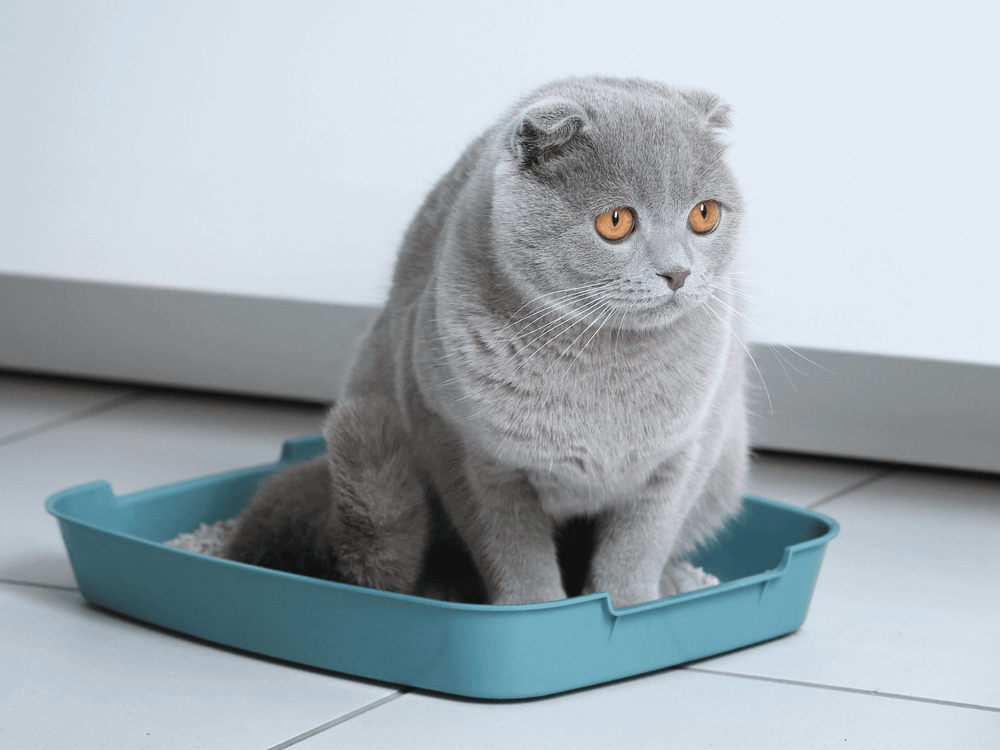
Urinary problems in cats
First of all, it is important to distinguish between renal failure and urinary disorders in cats . Two diseases that are often confused but are nevertheless very different.
Kidney failure is an irreversible disease, a progressive loss of kidney function. Remember the slogan “drink, eliminate”? That’s the kidneys’ job!
The kidneys have a major role in regulating hydration and minerals, and eliminating toxins that are constantly produced by the body. They are highly irrigated and filter the blood, and direct electrolytes (sodium, chlorine, potassium, etc.), water and many substances resulting from protein metabolism (such as creatinine and urea) into the urine. Chronic renal failure is a dysfunction of the renal tissue, of the kidney itself.
In the kidneys, we distinguish what is called the parenchyma, very irrigated, which contains the functional units like small factories to sort the molecules to be recycled, and the waste. This allows the kidney to clean the blood and produce a first urine, sent to the renal pelvis. This is like a funnel that collects the primitive urine and sends it to the ureter, then to the bladder. From there, we speak of the lower urinary tract: the ureters, the bladder and the urethra conduct the urine, transform it and eliminate it.
Common urinary problems in cats include:
Feline idiopathic cystitis : An inflammation of the bladder that may be painful and cause difficulty urinating, or blood in the urine.
Urinary stones (most commonly struvite stones or calcium oxalate stones), which can be present in varying quantities and sizes from the renal pelvis (often these are calcium oxalate crystals and stones), to the bladder. The stones can sometimes obstruct a duct (ureter or urethra), which becomes an emergency, because urine can no longer exit the body, while it is continually produced.
Feline idiopathic cystitis
One of the subunits of feline lower urinary tract diseases (FLUTD), cystitis corresponds to an inflammation of the bladder wall, creating the painful and frequent excretion of small amounts of urine. The causes are varied; it can be associated with many diseases: congenital malformation, tumor, presence of urinary stones that disrupt the flow of urine, infection in the urinary tract... But in the majority of cases (2 out of 3), the origin is not identified. No physical or infectious cause has been proven. This is why we speak of feline idiopathic cystitis , the major source of which would be stress , to which the cat is particularly sensitive.
Urinary stones
Urinary stones or urolithiasis correspond to the formation of a sort of small stones in the urine. This presence can irritate the bladder wall, generate inflammation - this is called cystitis. As they grow, the stones can also obstruct the urethra - the channel through which urine leaves the bladder - hindering or even preventing the cat from peeing. This constitutes a veterinary emergency!
There are several types of stones, but the most common are struvite stones and calcium oxalate stones.
Struvite calculations
Struvite stones, also called magnesium-ammonium phosphate stones (phosphate, ammonium and magnesium), form when the urine becomes saturated and alkaline (alkaline urine), or when there is a urinary tract infection with a urease-positive germ. Urease-producing bacteria alkalinize the urine and increase the proportion of ammonia in the cat's urine. This increase in ammonia, coupled with a higher urinary pH, develops small crystals that can then aggregate into stones.
Calcium oxalate stones
Calcium oxalate stones are formed in the event of saturation of the urine with calcium and oxalic acid and prolonged acidification of the urine (acid urine). Often already formed in the kidneys, they end up in the bladder. Just like struvite stones, they can also form in the event of a urinary tract infection with a urease-positive germ responsible for alkalinization and an increase in the proportion of ammonia in the urine. Ammonia, combined with a higher urinary pH, allows the crystallization of small crystals which can then transform into stones.
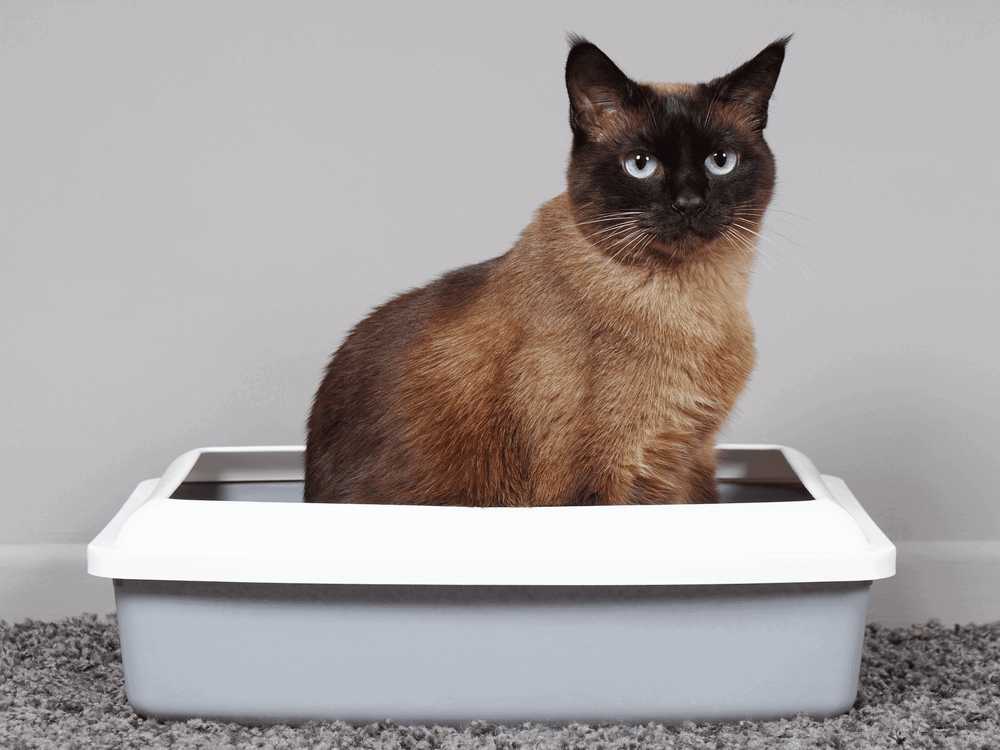
What are the symptoms of urinary disorders in cats?
A cat suffering from urinary disorders meows before urinating or while peeing, has difficulty urinating, or even an inability to urinate in the most serious cases. Blood is also sometimes present in its urine.
Behavioral signs are also observed, such as uncleanliness . Some affected cats urinate in places other than their litter box. Associating their pain with their toilet, they prefer to relieve themselves elsewhere.
Although the symptoms are identical, it is nevertheless imperative to determine the origin of the urinary disorders , which may be due to cystitis (idiopathic or not) or the presence of urinary stones. Identifying urinary stones is all the more necessary to ensure the correct treatment!
Struvite stones - if they are small enough - can be dissolved by a suitable diet , which notably acidifies the urine and reduces urinary saturation with substrates. However, medical treatment may also be necessary in the event of an associated urinary tract infection.
As for calcium oxalate stones, these can only be removed by surgery . A suitable diet alone cannot dissolve these stones. On the other hand, it can prevent their recurrence .
Cystitis, urinary stones: what are the causes?
As mentioned above, cystitis can be due to a congenital malformation, a tumor, the presence of urinary stones or even a urinary tract infection. But when it is idiopathic (in the majority of cases), it is stress that is blamed. To find out more, we tell you more in our article on cystitis in cats.
For struvite and calcium oxalate stones, several risk factors have been identified.
A deficient water supply
The cat is a water eater!
A cat fed exclusively with dry food (kibble) consumes less water and urinates less than a cat that eats wet food.
According to one study, “ cats fed canned wet food were three times less likely to develop calcium oxalate stones than cats fed other foods ” (Lulich et al., 1999). This has not been proven for struvite stones.
It is important to understand the mechanism: if kitty does not drink enough, he will go to the bathroom less often. His urine will therefore become concentrated.
Inadequate diet
Lack of water is a risk factor. As we have just seen, a cat fed exclusively on kibble will have much more concentrated urine than another consuming a mixed or wet diet (pâté, home-made ration, etc.).
The nature of the food must be taken into account, but its composition can also have an influence on the formation of stones.
Calcium oxalate stones form in a context of oversaturation of the urine with calcium and oxalic acid. Our cats' urine naturally contains oxalic acid and calcium, but an increase in their content can lead to the formation of crystals. It's a bit like when you put salt in water: it's soluble, and if you put a lot of it, it stays there, it can no longer dissolve.
Vitamin C and hydroxyproline (in quantity) are also two precursors of oxalic acid. Hydroxyproline is an amino acid found almost exclusively in collagen (a component of carcasses, collagen, and bones). (Zentek and Schultz, 2004; Dijcker et al. 2014).
Struvite stones form when the cat's urinary pH is above 7 and there is sufficient phosphate, ammonia and magnesium. A diet too rich in these minerals could promote their development.
Diet changes urinary pH due to the molecules consumed, minerals and amino acids and continually eliminated through urine. It is therefore not because a food has a more or less acidic taste, or a more or less acidic pH that it influences urinary pH. It is its content in many substances, all essential, but which must be in a certain balance, which influences urinary pH.
Non-fractional meals
The composition of the diet is not the only factor that matters; the rhythm of meals also matters!
In cats and all animals, food intake causes a natural increase in urinary pH in the hours following the meal. The urine becomes more alkaline. This effect, called “postprandial alkaline tide”, is due to renal compensation for the loss of acid, secreted in the stomach during digestion. The H in the blood must remain stable. It is necessary for life. When acid passes from the blood into the stomach, to keep the blood pH stable, the kidneys play a regulatory role and release alkali to prevent the blood pH from increasing. For a cat's diet of 4 meals a day or more, this regulation is done well.
If food intake is very high (e.g. feeding only 1 or 2 meals per day), a urinary pH of 8 may be reached. A cat eating only one or two large meals per day will therefore be at greater risk of developing stones than a cat having at least 4 daily meals available.
Cat Sex and Breed
Urinary problems can affect all cats, but the risk is higher in neutered, sedentary, and obese male cats.
In male cats, obstructive forms are more common due to the narrowness of the urethra at the penis. Thus, small stones that would pass naturally in a female can more easily become stuck in a male.
Some cat breeds are a little more predisposed to one type of stone or another. “ But in the end, no cat is truly safe ,” emphasizes Veterinarian Dr. Géraldine Blanchard.
A pathology
Struvite stones are often the result of a urinary tract infection .
Bacteria have the characteristic of transforming urea into ammonia, which facilitates the crystallization of struvite.
As the risk of urinary tract infection is increased in cases of obesity , diabetes , kidney failure or compromised immunity, these are situations with a higher risk of urinary stones.
If you have urinary stones, your veterinarian may need to check for one of these diseases.
How to treat and prevent the appearance of urinary stones?
Cystitis, urinary stones, these urinary disorders require medical care and above all, an adapted diet, specifically formulated for cats suffering from urinary problems . A point that we will mainly address in this part.
As explained above, struvite stones - if they are small enough - can be dissolved by diet, whose primary function is to acidify the urine. Conversely, calcium oxalate stones cannot be dissolved. Surgery is necessary to remove them, but it is possible to prevent their reappearance by adopting an adequate diet specially designed for urinary disorders.
Whatever the origin of your cat's urinary disorder, its food will be key. It must be very rich in water, low in minerals (calcium, phosphorus, magnesium) to reduce saturation in crystal substrates, rich in highly digestible quality proteins, while providing all the nutrients necessary for the good health of your whiskered one.
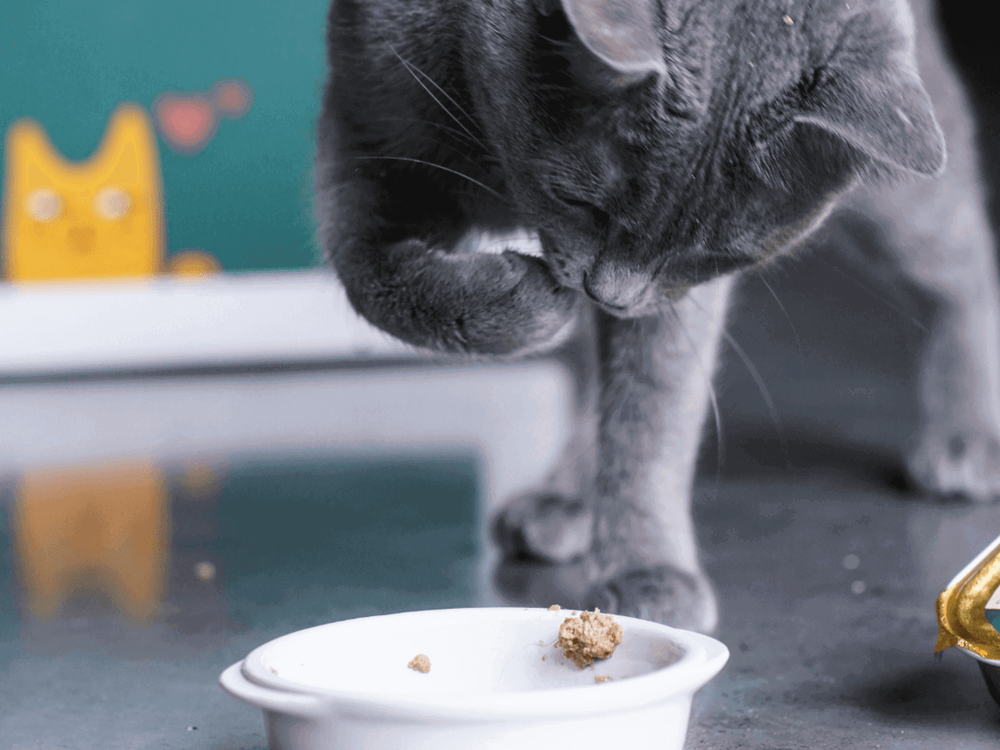
Hydrate your cat as much as possible 💦
Moisture is a fundamental element in the management and prevention of urinary stones. As we saw above, the less a cat drinks, the more its urine will be concentrated in minerals and stone precursors.
For your cat, it is therefore essential to increase its water consumption , in order to dilute the urine as much as possible and promote the quantity and frequency of urination. Wet is ideal.
Make sure he always has fresh, clean water available. To encourage him to drink more, don't hesitate to make him some flavored water : water and a few drops of tuna juice or chicken or beef broth. If your cat prefers moving water (like the one coming out of the tap), install a water fountain , for example, and maintain it every day.
Pate first of all! 😺
Offering water to your cat is good. But offering a diet rich in water is even better! The cat prefers to eat the water than to eat and drink alongside it. In any case, it makes him drink, and urinate, a lot more.
As a reminder, our cats are by nature prey eaters, who know how to keep the water they eat, but remain small drinkers and spontaneously drink very little. Just like their ancestors from the desert, they hydrate themselves mainly through their diet. It is by consuming their prey that they ingest all the water contained in their tissues. Our whiskered ones are today more purrs than hunters, but they have kept this tendency to prefer to eat water.
Among the foods richest in water, it is on cat food that you should bet to hydrate your feline as much as possible.
As a guide, pâté contains on average 75% water compared to 10% for kibble! A cat eating only kibble will of course drink “a lot of water” in its bowl, but it will drink much less and urinate less than when it eats wet food and “drinks little” in its bowl.
Other advantages of pâté: it is less caloric than kibble and helps to satisfy the appetite, thanks to its high water content which provides volume in the stomach. A cat fed mainly with pâté will see its risks of overweight, obesity and diabetes decrease. However, these diseases increase the risk of urinary disease...
Pate is an ally, but it still needs to be well formulated for your cat suffering from urinary problems.
A cat diet low in minerals 🍗
For your mustachioed one, you need to try to reduce urinary saturation in crystal substrates, by favoring a moist food, but also poor in minerals (calcium, phosphorus and magnesium).
Poor, but not devoid of minerals!
Be careful, you still need to keep enough of these minerals to cover nutritional needs and ensure all the body functions to which they contribute.
Minerals remain essential to the cat; they guarantee the stability of the body, blood circulation, cell irrigation, oxygen transport, energy use, digestion, nerve conduction, production of enzymes, hormones, skin health, and of course the growth, maintenance and renewal of tissues, all tissues. Their content must be limited, but sufficient, and above all balanced.
A cat food rich in quality proteins 💪
The quality of the proteins used in your cat's food is also important.
It is important to know that the digestion of proteins and amino acids in the body produces “waste” that is then eliminated in the urine: urea and creatinine, among the best known (but there are many others!). Depending on the amino acids that make up the proteins, but also on the mineral content of the food, the urinary pH and the composition of the urine can be modified.
Protein intakes from carcasses and cartilage also involve intakes rich in collagen, a protein that contains hydroxyproline. This amino acid can increase urinary excretion of oxalate!
Choosing wet food, without carcass or mechanically separated meat, allows you to reduce hydroxyproline to a strict minimum while maintaining a high nutritional quality protein intake with an amino acid profile that meets the needs of carnivorous cats.
In feline nutrition, we sometimes hear about the protein/phosphorus ratio of a food, to judge the quality of the proteins used. Quality protein sources have a very high protein/phosphorus ratio, which means a lot of protein for little phosphorus. High-quality proteins include muscle (fish, meat, eggs, heart), liver and to a lesser extent kidney, lung lobe. Cereals, carcasses and bones, on the other hand, have a low protein/phosphorus ratio.
To learn more, please read our article on proteins in your cat's diet.
Cat suffering from urinary tract disorders: bet on zucchini 🥒
Zucchini offers many benefits for your cat. Rich in water and low in calories, this vegetable plays a beneficial role in cats suffering from urinary disorders.
According to a study published by Dr. Vet. Géraldine Blanchard, a substantial amount of zucchini (at least 10g/kg of the cat's optimal weight) can reduce urinary saturation in calcium oxalates, and can thus help prevent the recurrence of calcium oxalate urolithiasis.
Zucchini is also an ally because it contains fiber in reasonable quantities, not excessive: these are necessary for good intestinal transit, but if the intake is too high, part of the water ingested is eliminated in the stools rather than in the urine.
How much food should you give your cat with urinary problems?
The amount of food to give your cat depends on several factors: its physical activity (indoor or outdoor cat), its age, the type of food you offer it (only pâté or a mixed diet), but also and above all its optimal weight.
To find out how much pâté and/or kibble to give your cat, we offer a personalized ration calculator on our site.
How many meals per day should you give your cat with urinary tract problems?
In addition to a specific and quality diet, it is also important to offer your cat several small meals per day, rather than one or two large meals.
As explained earlier in this article, the feeding method affects the cat's urinary pH. After a meal, the urine tends to become more alkaline. This is due to urinary compensation for the loss of gastric acids secreted during digestion. The larger the meal, the more alkalinization increases, thus promoting the formation of struvite stones.
For your mustachioed man, it is therefore advisable to divide his daily ration into at least 4 meals .
For example, for feeding in a tray of pâté, you can plan a meal when you get up, a meal before leaving the house, a meal when you return (whatever time you return) and a meal before going to bed.
And for cats with big appetites?
Limiting the risk of being overweight for a sedentary mustachioed person is a major asset for their long-term health. Not always easy when the diet is dry!
Pate is then the best ally. Rich in water, it brings volume to the stomach and increases the feeling of satiety. For equal weight, it is, on average, four times less caloric than kibble. Enough to considerably improve the ordinary!
Ziggy Vet Urology pâté
At Ziggy, our priority is the health of all cats. After the Ziggy Vet Diabetes and Ziggy Vet IRC (Chronic Renal Failure) pâtés, we offer a complete pâté dedicated to cats suffering from urinary problems.
Formulated by our veterinary specialist in clinical nutrition, Dr Géraldine Blanchard, Ziggy Vet Urology pâté supports urinary function in cases of urinary disorders (idiopathic cystitis, urinary stones).
It is formulated to reduce the formation of struvite and calcium oxalate crystals and promotes the dissolution of struvite stones.
Please note, always under veterinary supervision: in the event of a urinary tract infection, for example, medical treatment must be implemented as indicated by your veterinarian, screening for a disease causing the problem carried out as recommended...
Our Ziggy VET Urology pâté meets all the criteria mentioned above:
Rich in water for guaranteed urine volume.
A limited and balanced mineral content : 0.17% calcium, 0.16% phosphorus, 0.03% magnesium, with sufficient potassium, without excess sodium
Quality proteins. Like all our pâtés, our recipe for cats suffering from urinary disorders contains a large majority of muscle (hearts) and noble offal (livers, lung lobes), of great nutritional richness and highly assimilated by our cats. It contains less than 0.2% hydroxyproline/proteins, which is exceptionally low.
Rich in zucchini . To reduce urinary saturation in calcium oxalate, our Ziggy Vet Urology pâté contains 2.5% dehydrated zucchini, the equivalent of 24% fresh zucchini. “ Considering the consumption of Uro food, this is equivalent to giving 12g of zucchini/kg of the cat's optimal weight per day, which is more than 10g/kg ,” emphasizes Dr. Géraldine Blanchard.
Our Ziggy Vet Urology pâté also has a moderate calorie content, to combat overconsumption and feed cats without starving them, even the most gluttonous or overweight ones.
And for cats whose illness can affect their appetite, we have ensured that our Ziggy Vet Urology pâté is also very appetising and delicious, thanks to the addition of thyme, an aromatic plant, and fish oil, a source of Omega 3 and 6.
Our Ziggy Vet Urology pâté takes care of your cat, while continuing to delight it.
As you will have understood, diet plays a major role in the treatment and prevention of urinary disorders.
A specific, quality food linked to the most recent scientific knowledge, such as our Ziggy Vet Urology pâté, will help your sick cat.
And once again: water is a fundamental element in the management and prevention of urinary disorders. Hydrate your mustachioed one as much as possible by providing him with water at will and by offering him pâté!


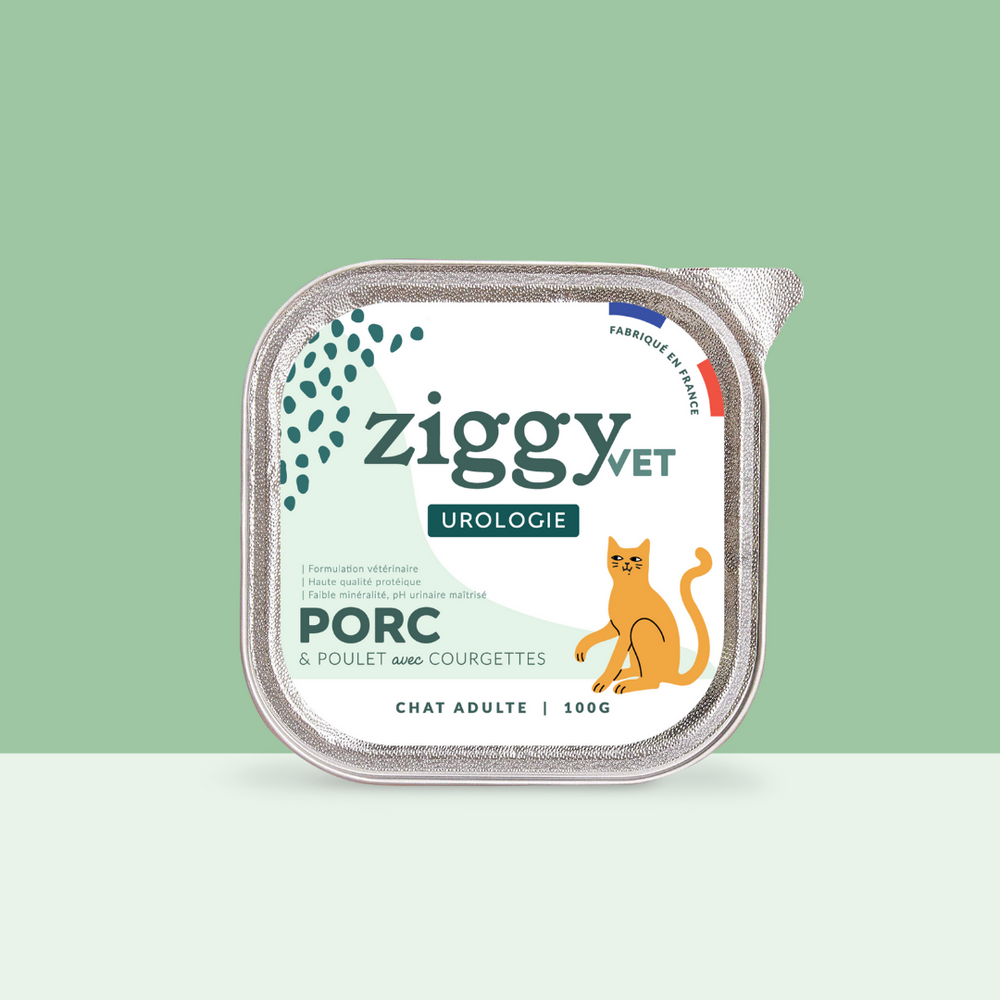
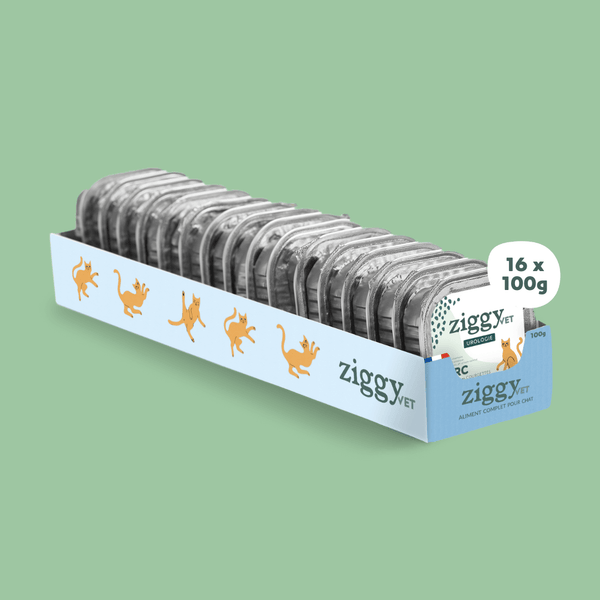
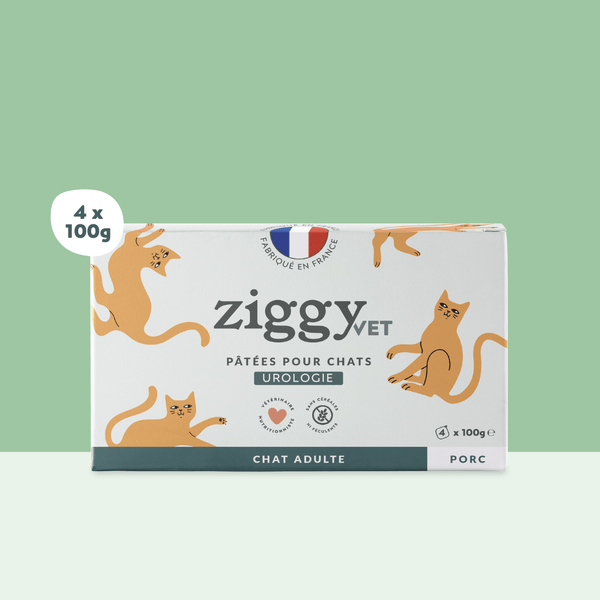

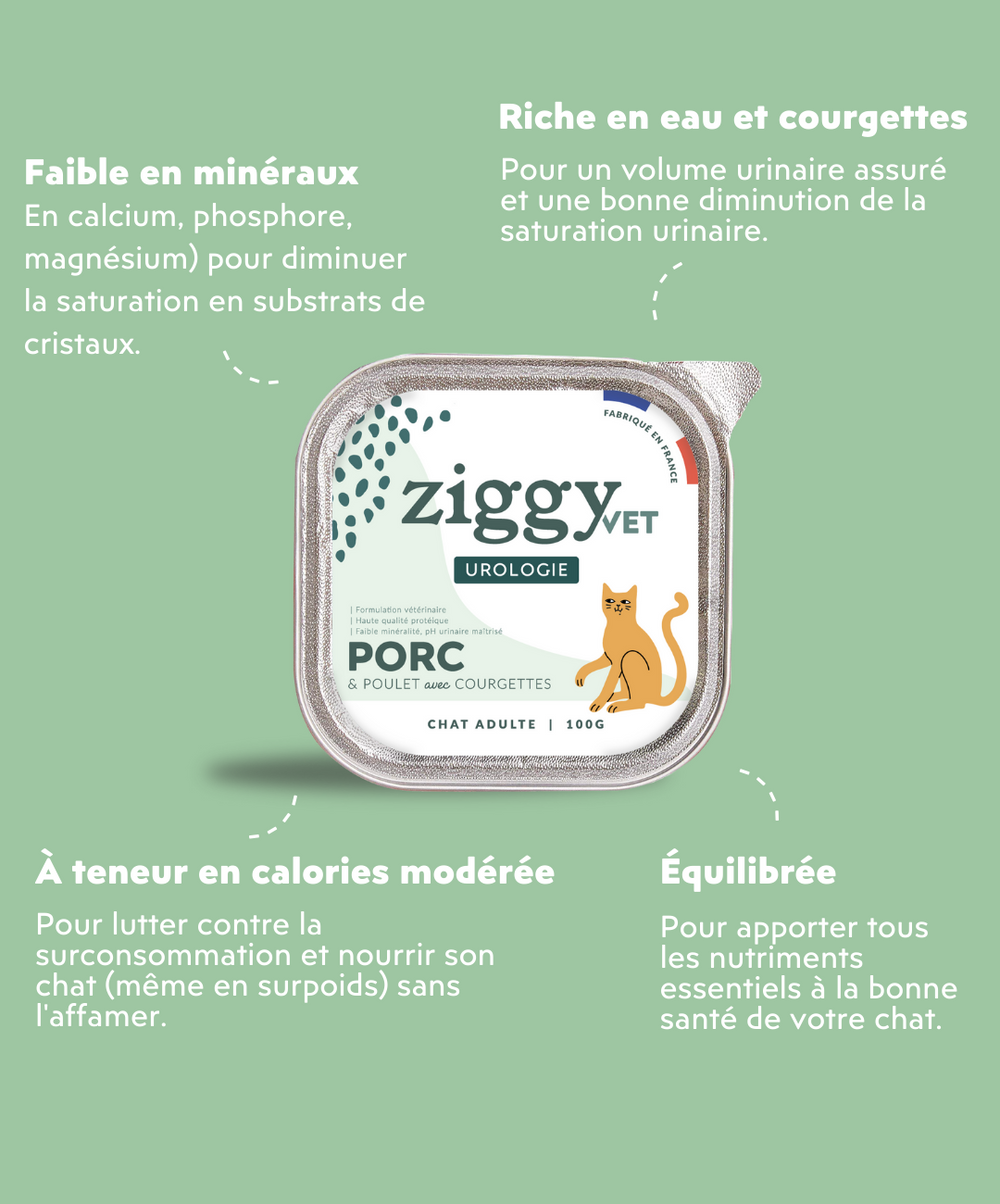
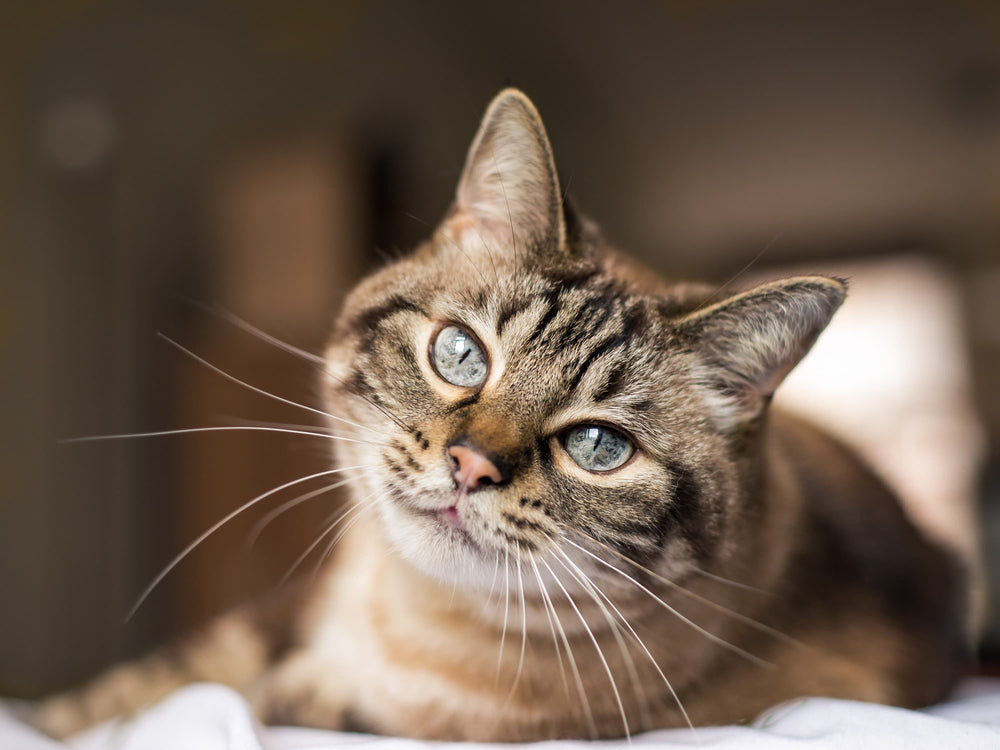
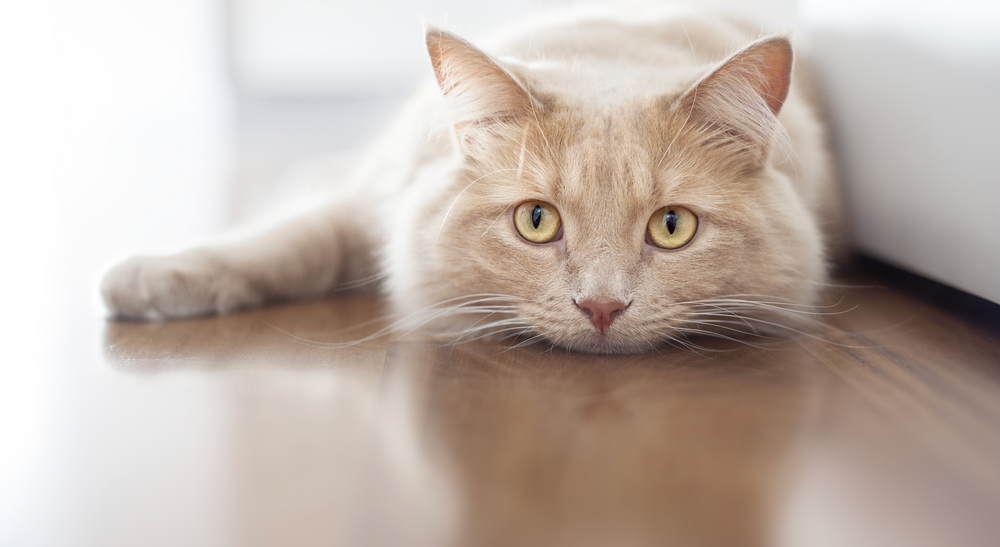
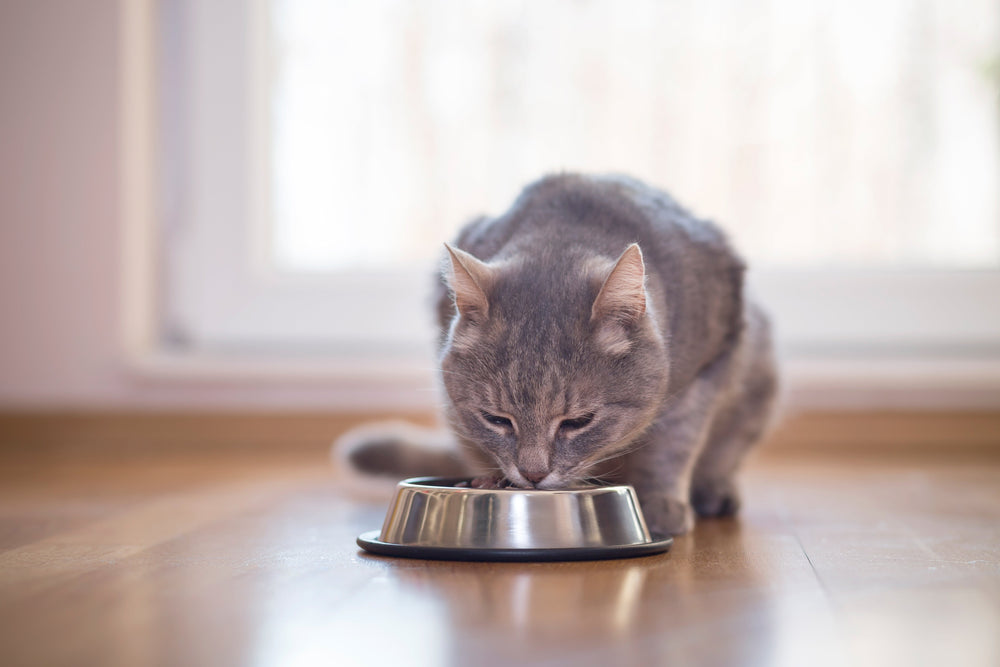
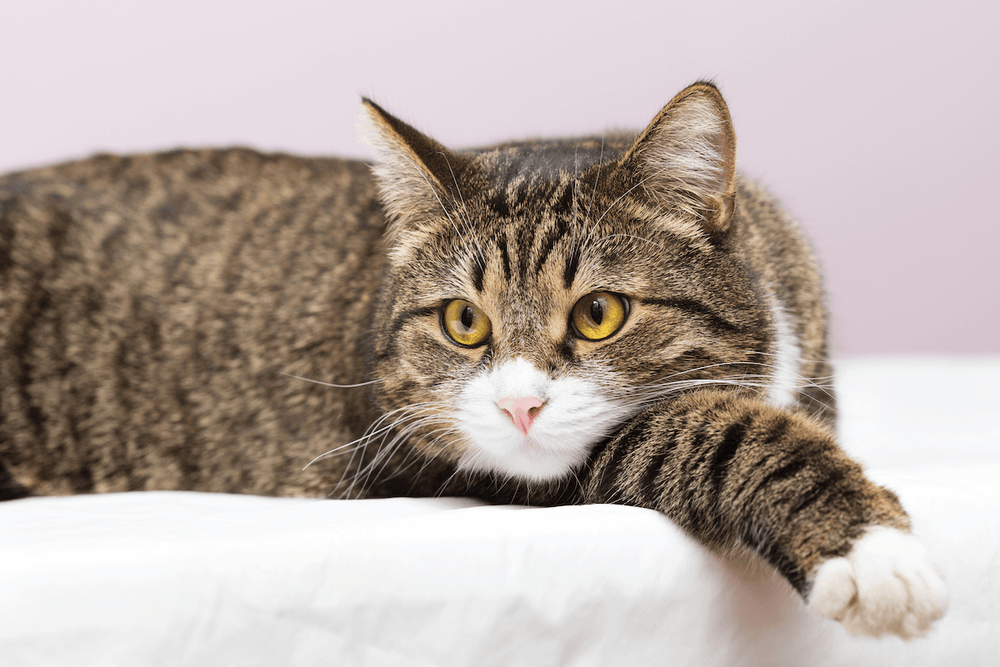
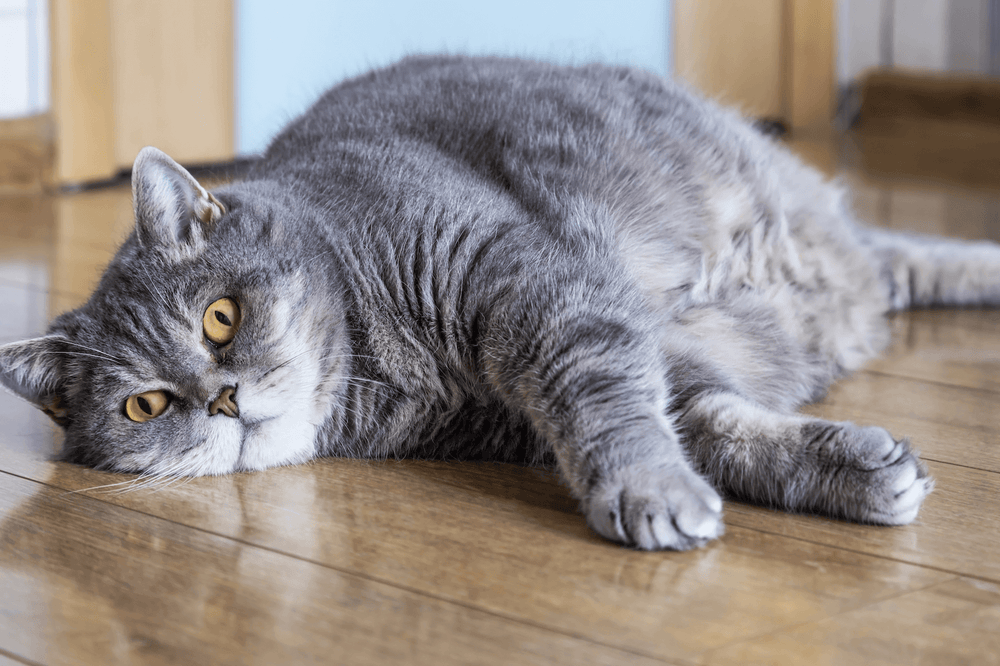
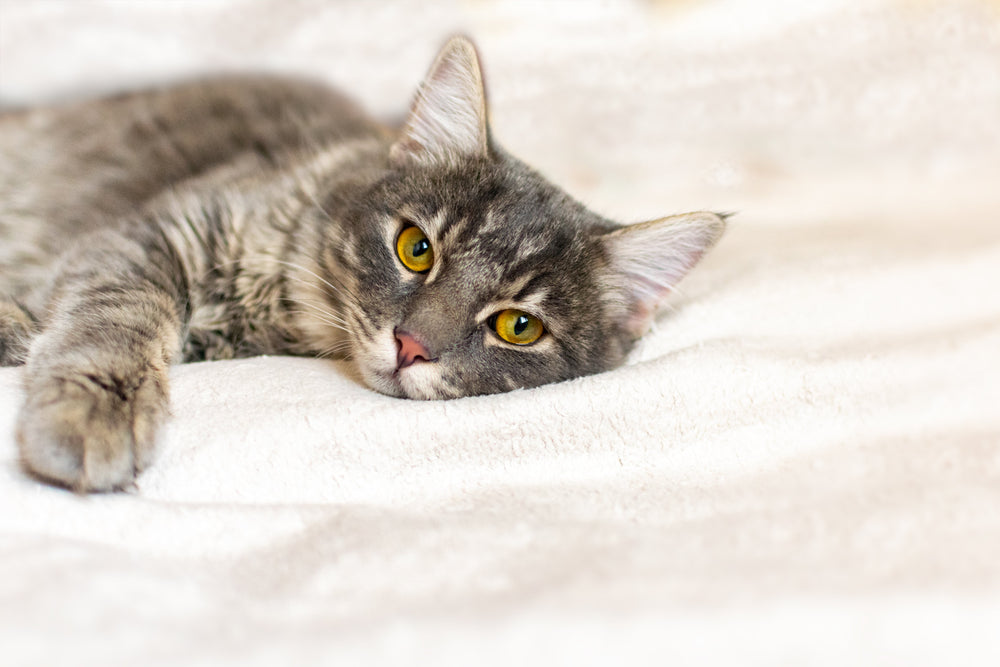
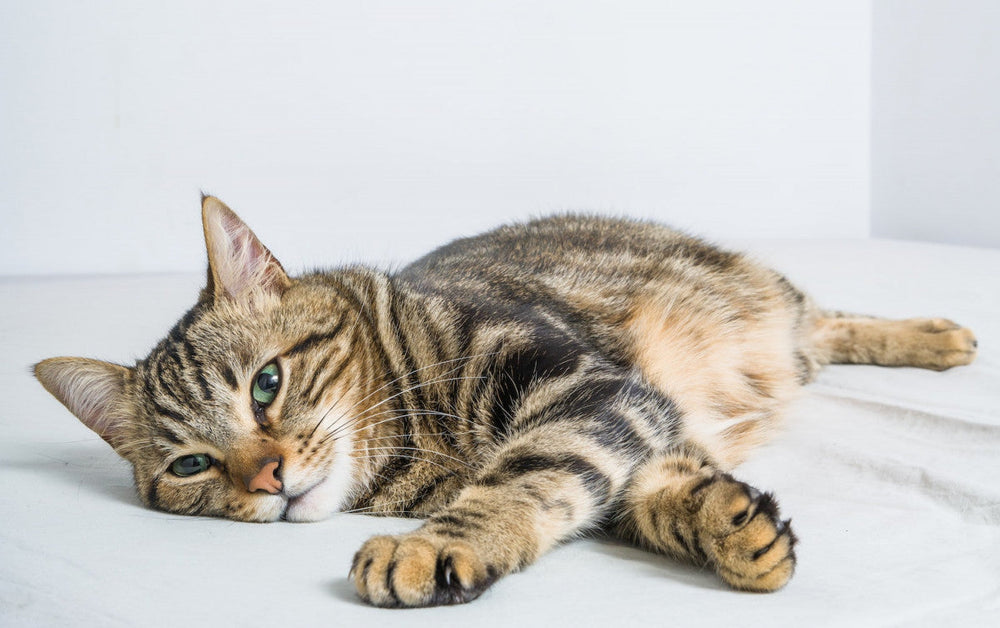


Bonjour Pauline,
Merci pour votre commentaire. 💖
En cas de cystite et tout autre trouble urinaire, il y a un objectif prioritaire : diluer les urines ! Et pour cela, il faut de l’hydratation qui peut passer par l’eau (fontaine à eau, gamelle renouvelée fréquemment) mais aussi par l’alimentation en favorisant la pâtée ! À l’inverse, une croquette n’aidera pas à combler le besoin hydrique, car c’est une alimentation sèche. Vous pouvez lui offrir quelques croquettes, mais la pâtée doit rester majoritaire. N’hésitez pas alors à multiplier les points d’eau dans ce cas et assurez-vous que votre loulou boive un maximum. 😺
N’hésitez pas à nous contacter par email à hello@ziggyfamily.com si vous avez d’autres questions.
Bonjour,
Suite à une cystite , je tente de trouver pour mon chat une alimentation de qualité. je n’ai pas les moyens de passer à une alimentation exclusivement humide et je tente de trouver la bonne combinaison. Je viens de commander croquettes au poulet et patée spéciale urinaire . Ces croquettes sont-elles adaptées? merci d’avance pour votre réponse, et merci pour votre site qui est très clair et fourni en informations !
Bonjour,
Merci pour votre message.
Un chat qui a les reins fragiles en raison d’IRC, de cystite, ou de tout autre problème urinaire ou rénal doit en plus s’hydrater énormément, et ce, via son alimentation pour préserver son appareil urinaire et rénal.
La meilleure recommandation que l’on puisse vous donner est donc de passer votre chat à une alimentation exclusivement ou quasi exclusivement humide. Dans notre gamme d’aliments médicamenteux, nous proposons une pâtée spécifiquement formulée pour les chats souffrant d’IRC. Je vous glisse le lien juste ici. 💛
Pour définir les quantités exactes de croquettes et de pâtée à donner, n’hésitez pas à vous fier à notre Calculateur de rations journalières disponible sur notre site. On vous conseille également de consulter votre vétérinaire pour déterminer le poids optimal de votre chat afin qu’elle ne soit plus enrobée.
Est-ce que votre chat est déjà habitué à la pâtée ? Peu importe le nombre de fois où vous lui donnez à manger dans la journée, l’essentiel est qu’elle reçoive son besoin énergétique journalier. 😺
On reste disponible si besoin,
Belle journée à vous et tendres caresses à votre chat. 🐾
L’équipe Ziggy
Bonjour mon chat a droit a 60G par jour car elle est enrobée elle fait 6,5KG et j’aimerais passé en binutrition car elle fait une a deux cystite par an parfois, mais je ne sais pas comment répartir la pâté et les croquettes. Actuellement elle a 6 repas réparti sur 24H. Merci pour votre aide.
Bonjour Michael,
Merci pour votre commentaire 💛
Nos pâtées Ziggy Vet Urologie sont formulées le Dr Vétérinaire Géraldine Blanchard, spécialiste en nutrition féline depuis plus de 25 ans. Leur formulation est unique et spécifiquement adaptée pour les chats souffrant de troubles urinaires.
Si vous souhaitez en savoir plus, n’hésitez pas à nous contacter directement à hello@ziggyfamily.com.
L’équipe Ziggy
Bonjour,
Merci pour cet article très complet !
Les barquettes “Urologie” de chez Ziggie sont-elles équivalentes à une alimentation “C/D” de chez Hill’s ?
Cordialement,
Michael
Leave a comment